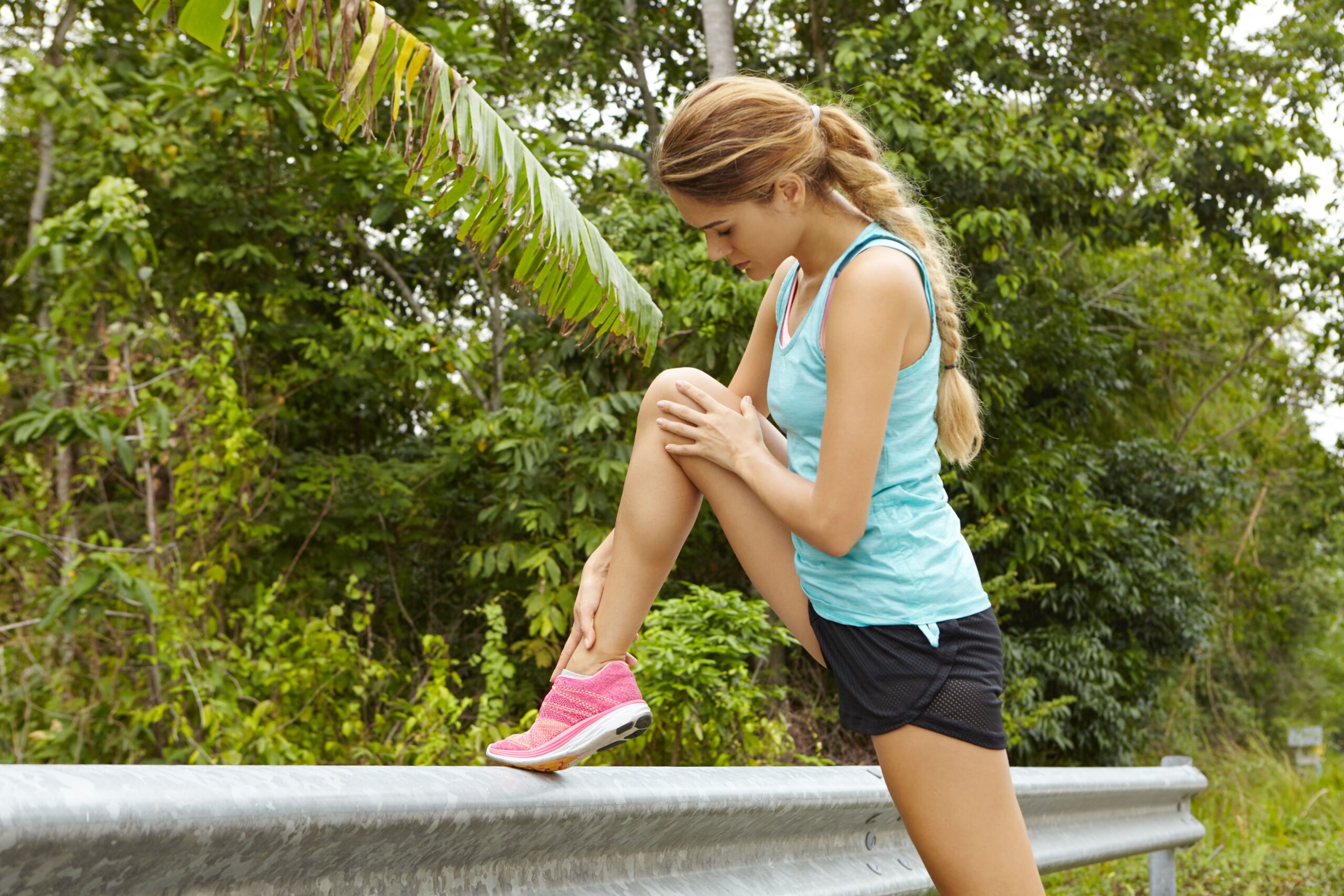Knee Pain
The Role of Physiotherapy for Knee Pain Treatment
Physiotherapy can be beneficial for knee pain. It helps by reducing pain, improving movement, and strengthening the muscles around the knee. Physiotherapists use specific exercises and treatments to target the source of pain, helping patients recover faster and maintain knee health in the long run.
What is Knee Pain?
Knee pain is discomfort or soreness in or around the knee joint. It can range from mild to severe and may feel like a dull ache, sharp pain, or throbbing sensation. Knee pain is a common issue and can affect people of all ages due to various causes like injury, overuse, or health conditions.
Some common Symptoms of Knee Pain
- Swelling or stiffness in the knee
- Redness or warmth to the touch
- Weakness or instability
- Popping or crunching sounds
- Inability to fully straighten or bend the knee
Cause of Knee Pain
1.) Injuries: sudden movements, falls, or direct hits can harm the knee’s ligaments, tendons, or cartilage.
Common injuries include:
- Ligament Tears (like ACL tears) are often caused by twisting or sports activities.
- Meniscus tears, where the knee’s cushion cartilage gets damaged from sudden turns.
- Fractures from falls or accidents
- Tendonitis is when the knee tendons get inflamed due to overuse.
2.) Arthritis: Knee arthritis develops over time, leading to pain and stiffness. There are different types:
- Osteoarthritis is common with aging and results from wearing down the knee’s cartilage.
- Rheumatoid arthritis: an autoimmune issue that causes swelling and joint pain.
- Gout: buildup of uric acid crystals in the joint, often causing sudden sharp pain.
3.) Overuse: Repeated movements like running or jumping can strain the knee, leading to:
- Runner’s Knee, pain around or behind the kneecap.
- Bursitis is when the sacs that cushion the knee (bursae) get inflamed.
4.) Mechanical Problems: Issues with how the knee moves or its structure can cause pain, such as:
- The dislocated kneecap, where the kneecap slips out of place.
- Loose fragments of bone or cartilage that float within the joint, causing discomfort.
5.) Other Conditions: Knee pain can also be caused by infection in the joint or conditions like cysts, which lead to swelling and limited movement.
Physiotherapy for Knee Pain Treatment
1.) Pain Relief: Physiotherapists use techniques like ice, heat, and massage to reduce knee pain directly.
2.) Strengthening Exercises: Specific exercises build strength in the muscles around your knee, like the quadriceps and hamstrings. Stronger muscles help support and protect your knee.
3.) Stretching and flexibility: Stretching exercises keep the knee joint and surrounding muscles flexible, reducing stiffness and helping you move more easily.
4.) Improving balance and stability: Balancing exercises help you gain better control over the knee joint, lowering the risk of future injuries.
5.) Corrective Techniques: Therapists teach you proper ways to move, stand, and walk to avoid putting extra strain on the knee.
6.) Home Exercise Plan: You’ll likely get a set of exercises to do at home, which is key to long-term improvement
How to get rid of knee pain very fast
- Rest: Avoid activities that strain your knee, allowing time for healing.
- Ice: Apply an ice pack for 15-20 minutes every few hours to reduce swelling and numb pain.
- Compression: Wrap your knee with an elastic bandage to reduce swelling and add support.
- Elevation: Raise your knee above heart level to help reduce swelling.
- Gentle Stretching: Light stretches, especially for your quadriceps and hamstrings, can relieve tension in the knee area.
- Use of supportive shoes: Wearing shoes that offer good support can reduce knee strain and relieve pain.
- Topical Pain Relief: Pain-relieving creams or gels can provide quick, localized relief.
Knee Physiotherapy Exercises
- Quad Sets: Sit with your leg extended. Tighten the thigh muscle (quadriceps) and press the back of your knee down to the surface. Hold for 5 seconds, then release. Repeat 10 times per leg.
- Straight Leg Raises: Lie down and extend one leg strain. Keep the other knee bent. Lift the extended leg a few inches off the ground, hold for 3-5 seconds, and lower. Dp 10 repetitions.
- Heel Slides: Lie on your cack and slide one heel towards your buttocks, bending the knee as far as comfortable. Slide it back out. Repeat 10 times for each leg.
- Step-ups: Use a low step or sturdy surface. Step forward with one foot, then bring the other up. Set back down, and repeat. This exercise helps strengthen the muscles that support your knee.
- Wall Sits: Stand with your back against a wall. Slide down into a sitting position, keeping your knees at a 90-degree angle. Hold for 10 seconds, then slide back up. Repeat a few times as you build strength.
- Hamstring Curls: Stand and hold onto a chair for support. Bend one knee, bringing your heel towards your buttocks, then lower. Do 10 reps for each leg.
Conclusion
At Dr. Geetanjali’s PhysioWorks, experts are trained in several techniques of physiotherapy for knee pain, which are discussed above. With earlier treatment and diagnosis, you can get fast recovery and relief from knee pain. Moreover, depending on your choice and comfort, if you want treatment at a clinic or home, we can conduct it. Our main goal is to provide you with the best knee pain treatment for your well-being.
Also Read This Blog – Frozen Shoulder and Physiotherapy

